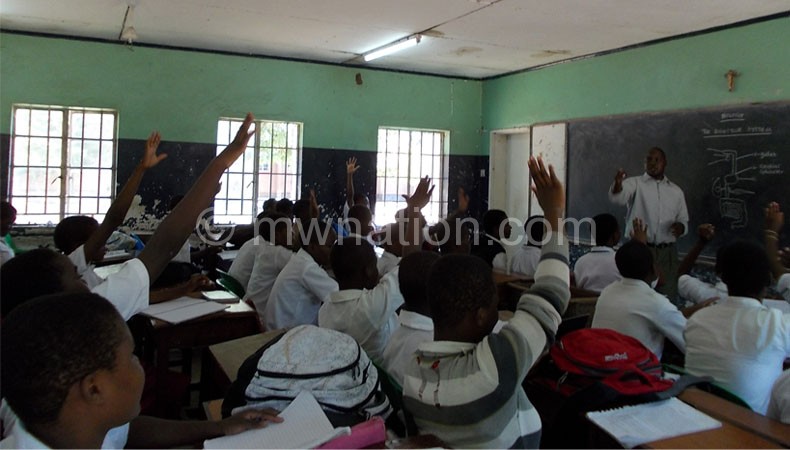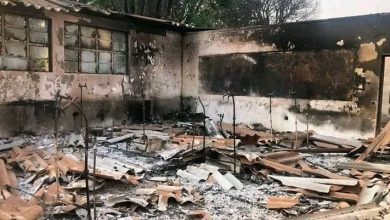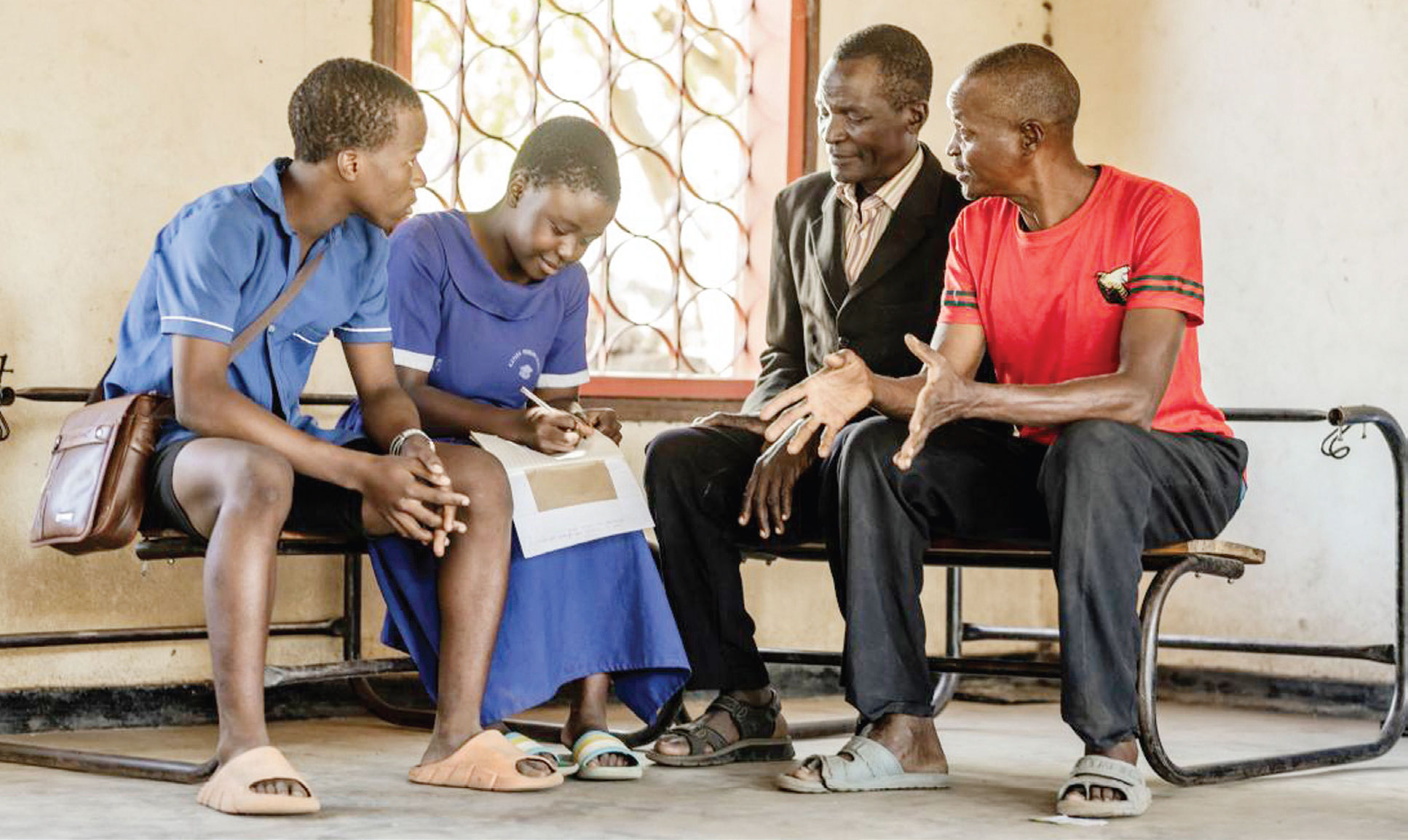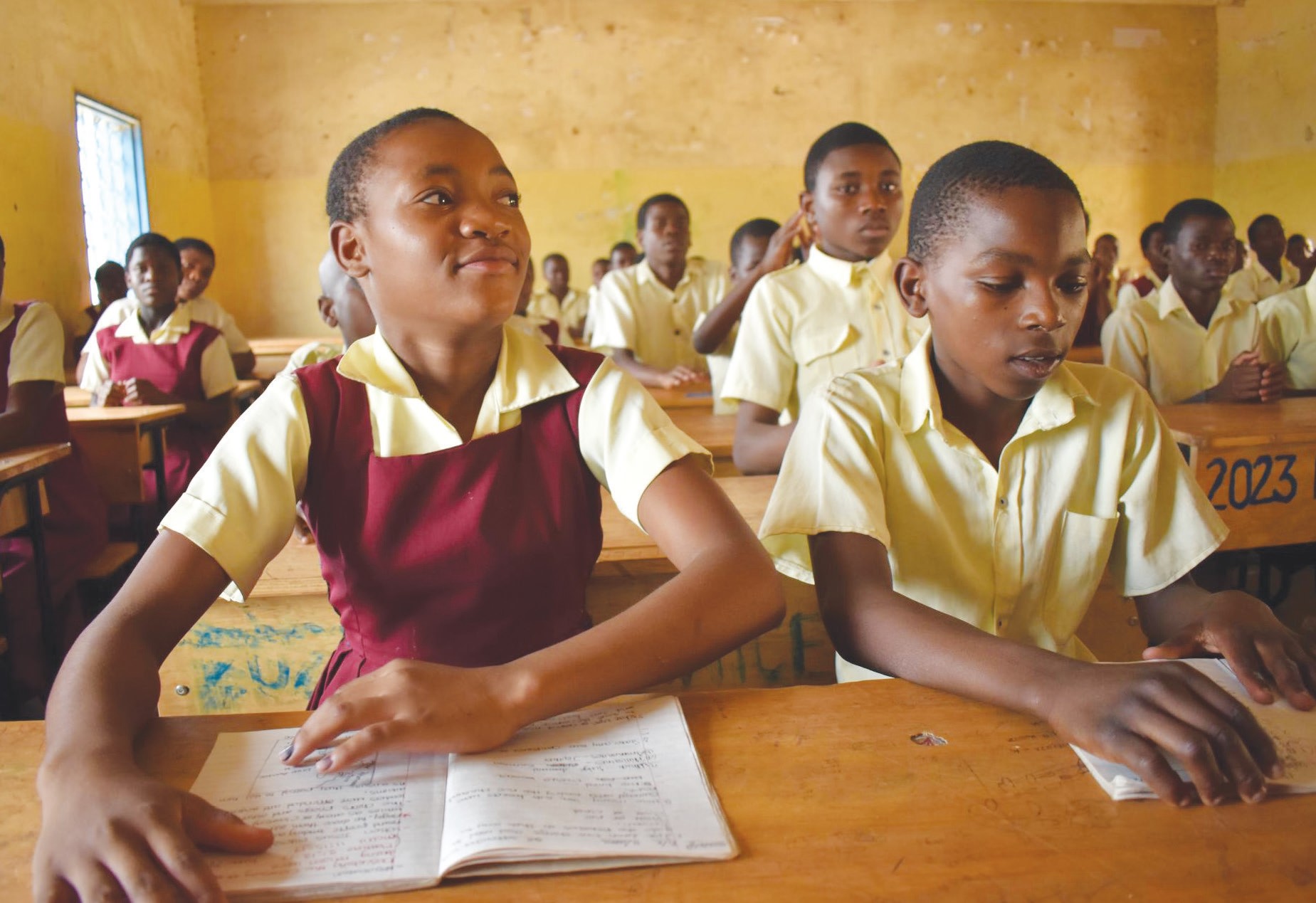Reducing teacher: Pupil ratio for quality education
For James Likonde, a Standard Four pupil at Mbayani Primary School in Blantyre, taking a bath before going to school is a waste of time. While pointing at his dirty shorts and legs, Likonde sees no reason to take a bath only to sit on a dusty floor during lessons.
“I work hard so that I can graduate to senior classes where there are desks. Our classroom is dusty. My uniform has to be washed every day to keep it clean,” he says.
 A recent visit to the school revealed that most junior classrooms are congested, with an average of 100 pupils each according to the school’s head teacher Bernard Sailesi. There are no desks in all junior classes and pupils sit on a rough and dusty floor with patches of old cement slabs.
A recent visit to the school revealed that most junior classrooms are congested, with an average of 100 pupils each according to the school’s head teacher Bernard Sailesi. There are no desks in all junior classes and pupils sit on a rough and dusty floor with patches of old cement slabs.
Sailesi says teaching at the school is a challenge, especially in junior classes because there is no space for a teacher to move around and give individual attention to pupils. He also says teachers hardly give out homework for fear of heavy workload.
Mbayani Primary School has 10 101 pupils and 84 teachers, translating to a teacher to pupil ratio of 1:120. It has 32 classrooms in which about 80 classes are run per day, on morning and afternoon shifts.
A few kilometres away from Mbayani is Namatete Primary School where, according to the head teacher, each class has an average of 110 pupils. Kawere Primary in Mponela has 115 pupils in Standard Six and the figure is higher in junior classes.
Since the introduction of free primary education in 1994, Malawi has grappled with high teacher to pupil ration. Civil Society Education Coalition (Csec) statistics indicate that between 1994 and 1997, primary school enrolment rose by 1.9 million and today, according to the Ministry of Education updated statistics, Malawi’s primary schools have 4.5 million pupils and about 59 000 qualified teachers.
Rabecca Phwitiko, spokesperson for the ministry, says between 2008 and 2013, enrolment in primary school increased by 16 percent at an average annual growth rate of four percent and the projection for 2017 is that the country’s primary schools will have 5.6 million pupils .
While the increased enrollment is good for improving the country’s literacy levels, the quality of basic education is wanting. The education sector is facing various challenges such as poor infrastructure and high enrolment.
To counter these challenges, government introduced the open and distance learning (ODL) system of training primary school teachers in 2010.
During the launch of the ODL programme at Lilongwe Teachers Training College (TTC) in 2010, Chaponda gave an example of Mulanje West Constituency where, he said, some teachers were handling 130 pupils per class.
By 2008, according to Csec statistics, Malawi had 3.6 million pupils against about 50 000 teachers. To reduce the ratio, government started to hire secondary school graduates to teach in primary schools. But critics described the move as a death-bed for quality education, considering that these recruits would only go through a two-week crash course to prepare them for teaching. The normal training period for primary school teachers is two years.
ODL is meant to support the annual teacher output which has been at 3 500 per year against the demand of 6 000 teachers. The programme targets to produce an additional 3 500 teachers per year.
Phwitiko says since 2010, ODL has produced an addition of 8 792 teachers and the current two intakes will produce 11 500 teachers.
She says the number of teachers in both public and private schools has increased from 53 031 in 2011/2012 to 65 000 2012/13. She adds that of this figure, 59 000 teachers are qualified.
“We expect to achieve the Education For All (EFA) goals recommendation of 1: 60 by 2017. It is true that the teacher to pupil ratio is high in some schools, but we are making good progress. National average teacher to pupil ratio is now at 1:76,” says Phwitiko.
Benedicto Kondowe, Csec executive director, notes the success registered by ODL, but says he believes Malawi could have achieved the ratio of 1:60 had it concentrated on expanding TTCs.
“We cannot make progress without expanding the TTCs. Quality of infrastructure and teaching methodologies are poor and no significant renovations are taking place. Due to low intake and lack of expansion programmes, the intake in these colleges remains low and stagnant. We are not yet there and we need to expand TTCs annual output,” says Kondowe.
Roy Hauya, an education commentator and former executive director of Malawi National Examinations Board (Maneb), is optimistic that Malawi will achieve its goal of producing a teacher output that catches up with the growing school enrolment, but he expresses concern over the quality of teachers being produced.
“We have simplified teacher training so much that we are still putting into classroom people who are inadequately prepared, poorly motivated and without adequate instruction materials. We have good innovations for training teachers, but these approaches tend to sacrifice the teacher training curriculum and experience so much that graduates have limited mastery of teaching content and pedagogy,” says Hauya.
Malawi is a signatory of Education For All (EFA) goals whose deadline is 2015. Among the goals is to have enough qualified teachers and a teacher to pupil ratio of 1:60 by next year. However, this also calls for extra effort in expanding infrastructure in schools.





